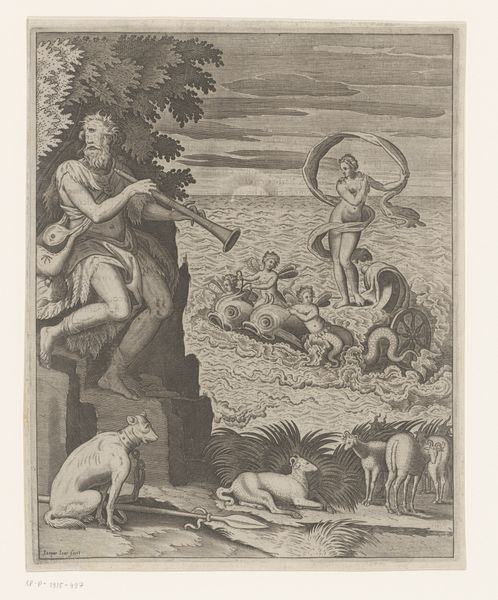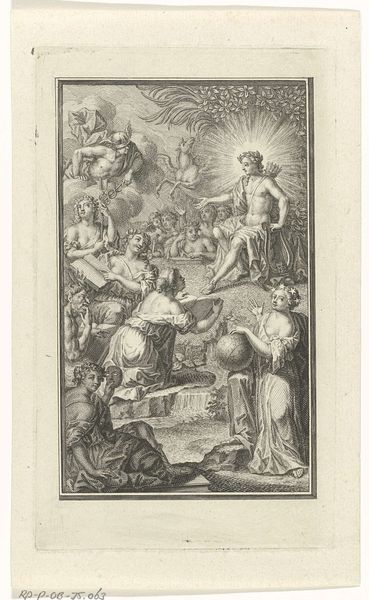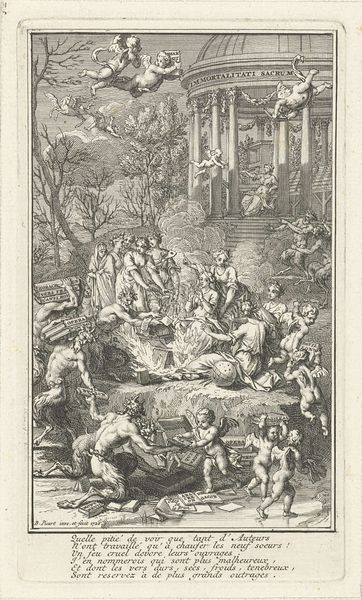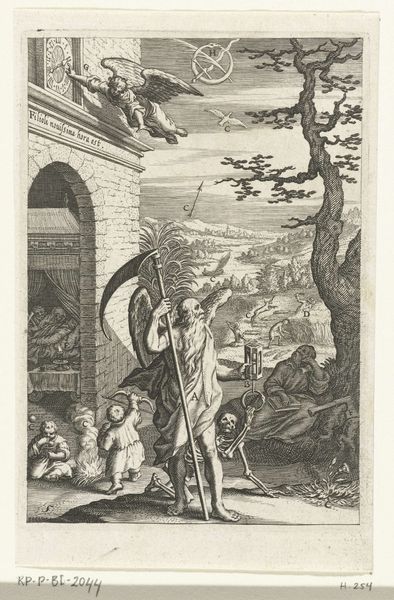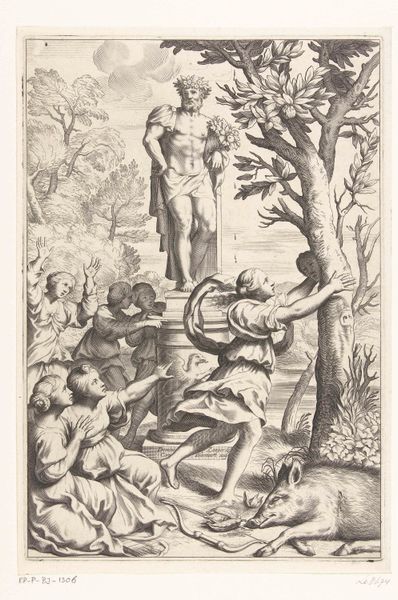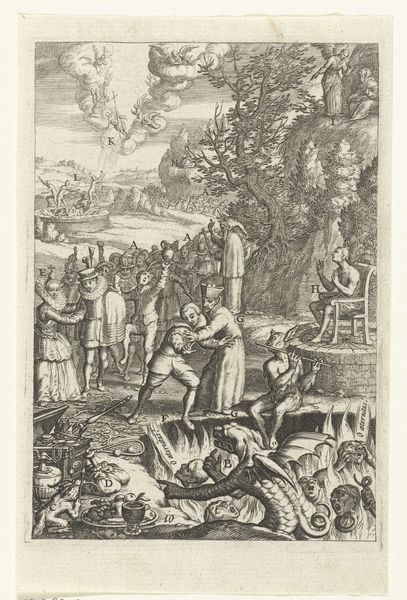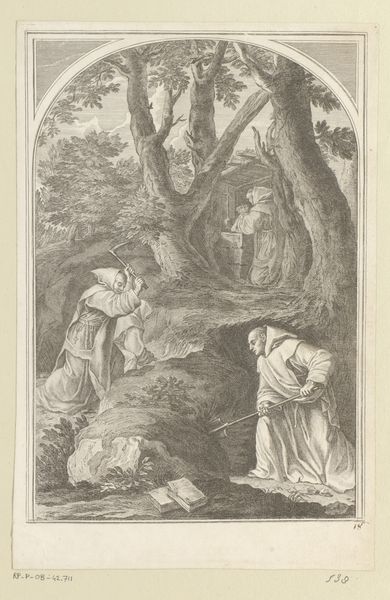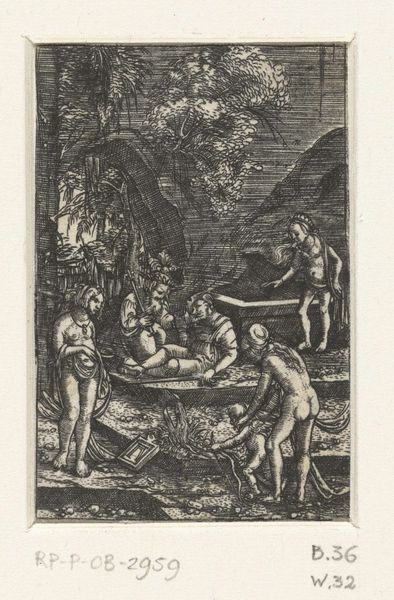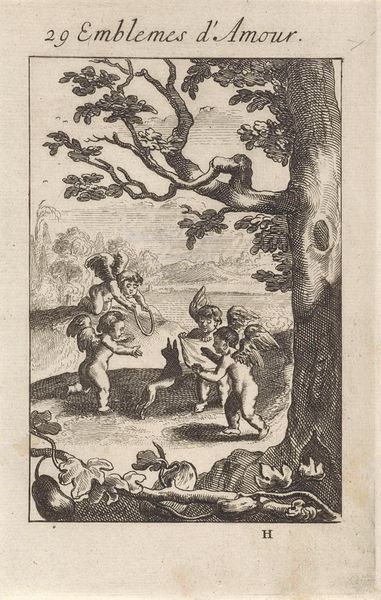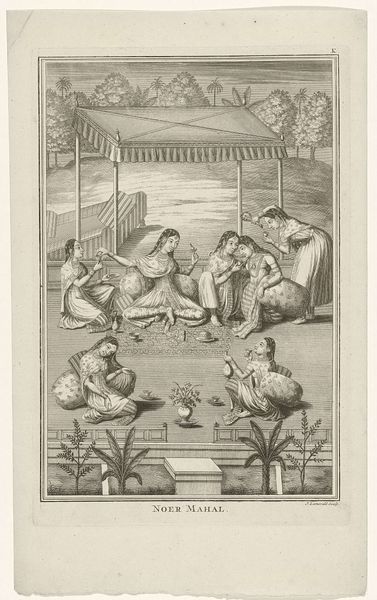
Drie Hesperiden brengen citroenen naar het Gardameer 1640 - 1646
0:00
0:00
print, engraving
#
baroque
# print
#
landscape
#
figuration
#
history-painting
#
engraving
Dimensions: height 297 mm, width 208 mm
Copyright: Rijks Museum: Open Domain
Curator: Allow me to introduce Cornelis Bloemaert's engraving, "Drie Hesperiden brengen citroenen naar het Gardameer," created between 1640 and 1646. Editor: It's remarkable how the eye is drawn immediately to the flowing water and the central figures; a classical narrative unfolds. Curator: Yes, observe the composition—the symmetry, the balance of light and shadow, so characteristic of baroque sensibilities. It employs an idealized structure... almost academic in its pursuit of harmony and order. The artist is clearly mastering form and technique above all. Editor: While the artistic style adheres to certain conventions, the figuration opens up a space to reflect on gendered roles, and the political function of women and water during this time period. Notice how all of the women are centered, attending to a labor. Curator: You read a particular intent. However, focusing strictly on formal execution, the meticulous lines, and careful detailing contribute to its overall aesthetic appeal. Note the musculature of the male figures. A striking level of precision, wouldn't you say? Editor: I think that one cannot separate that striking form from function and its effect on an audience. What we view as "beautiful" in musculature is wrapped up in histories of control. How are depictions like these being used to shape society at that moment, particularly relating to bodies that wield influence and labor? The bodies work, but it's unclear to what aim or to whose benefit. The power dynamics between the nymphs and river gods is ripe for interrogation. Curator: Yet consider, the engraving captures the elegance inherent in classical subject matter; there's a timeless quality present. Bloemaert isn't necessarily trying to convey any deeper meanings; rather, I feel it's the beauty and technical prowess, showcasing control over form that he prioritized. Editor: Right, and within this so-called timeless beauty we confront the echoes of socio-political issues inherent in representation. Examining its place in art history through such a lens opens a door to consider how even the concept of aesthetics might evolve over time to include historically-aware contexts. Curator: A fruitful conversation, indeed. Bloemaert's engraving stands as a testament to classical influences. Editor: And to how such influences reverberate through culture, shaping everything they touch.
Comments
No comments
Be the first to comment and join the conversation on the ultimate creative platform.
